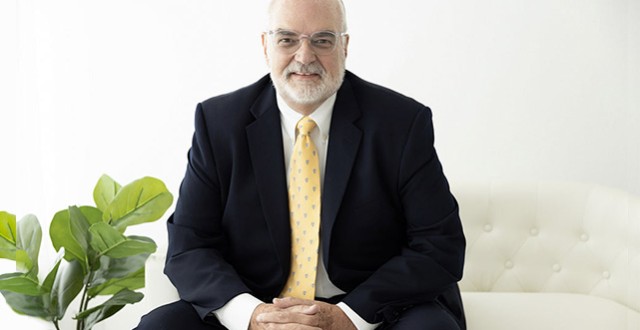
- Mediation
- Arbitration
- Court Neutrals
- Online Dispute Resolution
- Technology
- Court Decisions
- More
- Legislation
- Healthcare
- Guest Posts
- John DeGroote
- John C. Fleming
- Rick Freeman
- Professor Peter Friedman
- Honorable W. Royal Furgeson, Jr.
- James M. Gaitis
- Laura A. Kaster
- Professor John Lande
- Philip J. Loree, Jr.
- Michael McIlwrath
- F. Peter Phillips
- Professor Alan Scott Rau
- Professor Thomas J. Stipanowich
- Professor S.I. Strong
- Richard Webb
- Glen M. Wilkerson
- International arbitration
- Regulation
- Sports and Entertainment
- We’re Back!!!!Well, it’s been a while since we published and that is about to change. Since I spent much of last year becoming
 JAMS Welcomes Karl Bayer to its Panel of NeutralsJAMS, the world’s largest private alternative dispute resolution (ADR) provider, is pleased to announce that Karl Bayer
JAMS Welcomes Karl Bayer to its Panel of NeutralsJAMS, the world’s largest private alternative dispute resolution (ADR) provider, is pleased to announce that Karl Bayer Class Action Waivers in Arbitration Agreements: The Twenty-First Century Arbitration Battleground and Implications for the EU CountriesLinda S. Mullenix, Morris & Rita Atlas Chair in Advocacy at the University of Texas School of Law, has written “Class Ac
Class Action Waivers in Arbitration Agreements: The Twenty-First Century Arbitration Battleground and Implications for the EU CountriesLinda S. Mullenix, Morris & Rita Atlas Chair in Advocacy at the University of Texas School of Law, has written “Class Ac Picking the Proper Technological Tool for Problem-Solving in ArbitrationProfessor Amy J. Schmitz, John Deaver Drinko-Baker & Hostetler Chair in Law and Co-Director of the Translational Data An
Picking the Proper Technological Tool for Problem-Solving in ArbitrationProfessor Amy J. Schmitz, John Deaver Drinko-Baker & Hostetler Chair in Law and Co-Director of the Translational Data An
Recent Posts
Texas Supreme Court Enacts New Civil Procedure Rule Related to ADR in Expedited Actions
In November, the Texas Supreme Court promulgated a number of new civil procedure rules designed to expedite court cases where the amount in controversy is less than $100,000. Initially, proposed Rule 169(d) barred both the parties and the courts from forcing a dispute to mediation where no contractual obligation to mediate existed. Following a public comment period that ended on February 1st, a revised Rule 169 became final and effective on March 1, 2013. As revised, Rule 169(d) allows a court to refer a case to an alternative dispute resolution (“ADR”) procedure only once and only where there is no agreement between the parties stipulating that ADR will not be used. As enacted, Rule 169(d)(4) states: (4) Alternative Dispute Resolution. (A) Unless the Parties have agreed not to engage in alternative Dispute resolution, the court may refer the case to an alternative dispute resolution procedure once, and the procedure must: (i) not exceed a half-day in duration, excluding scheduling time; (ii) not exceed a total cost of twice the amount of applicable civil filing fees; and (iii) be completed no later than 60 days before the initial trial setting. Any objections to the use of ADR procedures must be considered by the court and cases filed in a justice court are exempt from the new Rule 169. In addition, the expedited action process does not apply to suits “governed by the Family Code, the Property Code, the Tax Code, or Chapter 74 of the Civil Practice and Remedies Code (healthcare liability claims).” It will be interesting to see what effect this departure from usual court practice with regard to ADR will have on the Texas civil justice system.
Continue reading...Constitutional, Treaty and Statutory Interpretation in International Commercial Arbitration
Professor S.I. Strong, from the University of Missouri School of Law (and a friend of this blog), has published an interesting article entitled Beyond the Self-Execution Analysis: Rationalizing Constitutional, Treaty and Statutory Interpretation in International Commercial Arbitration, 53 Virginia Journal of International Law __ (2013), University of Missouri School of Law Legal Studies Research Paper No. 2013-05. Here is the abstract: International commercial arbitration has long been considered one of the paradigmatic forms of private international law and has achieved a degree of legitimacy that is virtually unparalleled in the international realm. However, significant questions have recently begun to arise about the device’s public international attributes, stemming largely from a circuit split regarding the nature of the New York Convention, the leading treaty in the field, and Chapter 2 of the Federal Arbitration Act, which helps give effect to the Convention in the United States. Efforts have been made to place the debate about the New York Convention within the context of post-Medellin jurisprudence concerning self-executing treaties. However, that framework does not adequately address the difficult constitutional question as to what course should be adopted when a particular issue is governed by both a treaty and a statute that is meant to incorporate that treaty into domestic law. This Article addresses that question by considering the role of and relationship between the New York Convention and the Federal Arbitration Act, and by providing a robust analysis of the constitutional, statutory and public international issues that arise in cases involving international treaties and incorporative statues. Although the discussion is rooted in the context of international commercial arbitration, the Article provides important theoretical and practical insights that are equally applicable in other types of public international law. This and other scholarly papers authored by Professor Strong are available for download (free of charge) from the Social Sciences Research Network.
Continue reading...Martha Stewart Living Ordered to Mediate Dispute With Macy’s and J.C. Penney
Mediation is in the news again. Last week, a New York judge ordered a dispute between Macy’s, Inc., J.C. Penney Co., and Martha Stewart Living to mediation. The lawsuit itself reportedly arose after New York-based Martha Stewart Living signed a contract with Plano-based J.C. Penney to open a Martha Stewart mini shop in many of the retailer’s stores. In a separate case filed three months later, Cincinnati-based Macy’s sued J.C. Penney for interfering with the company’s contract with Martha Stewart Living. The two cases were later consolidated for a bench trial in New York State Supreme Court (Manhattan). During the third week of trial, a dispute purportedly arose over whether Macy’s has the exclusive right to sell certain Martha Stewart Living items. Macy’s has reportedly sold Martha Stewart branded items in its stores since 2007. In December 2011, J.C. Penney acquired a 17 percent stake in the home merchandise brand. As a result of the disagreement and failing communication between the parties, Judge Jeffrey Oing ordered the three companies to engage in mediation before April 8th. J.C. Penney has also agreed to refrain from selling Martha Stewart Living merchandise until that date. Stay tuned to Disputing for future updates about this case.
Continue reading...Foreclosure Mediation Programs Are Evolving in a Number of States
In recent months, changes to homeowner foreclosure mediation programs were a hot topic in a number of states. In Illinois, the Supreme Court enacted Rule 99.1 in an effort to offer some level of flexibility in foreclosure mediation programs across the state. The rule went into effect on March 1st and requires judicial districts that choose to offer such programs to demonstrate feasibility, sustainability, compliance with HUD-certified counseling requirements, and homeowner access to pro bono attorney representation. Next door, legislators in Missouri are currently considering whether to put an end to all homeowner foreclosure mediation programs. The bill was reportedly proposed in response to a 2012 St. Louis County law that allowed homeowners facing foreclosure the option to choose mediation. The law also required banks to participate and pay for the mediation. Under the St. Louis County law, banks that refused to participate in foreclosure mediation as well as those that participated in bad faith could be fined as much as $1,000. The Missouri Court of Appeals Eastern District later prohibited enforcement of the law in response to a judicial challenge by the Missouri Bankers Association. Finally, in both Connecticut and Oregon, lawmakers are purportedly considering changes to statewide foreclosure mediation programs. Connecticut Governor Dannel P. Malloy recently announced a proposal that would require banks to maintain consistent contact with homeowners involved in the foreclosure mediation process. In Oregon, lawmakers are reportedly considering significant changes designed to increase the use of non-judicial homeowner foreclosure mediation programs. Thanks to Court ADR Connection for bringing this topic to our attention. It will be interesting to see how homeowner foreclosure mediation programs continue to evolve in the future.
Continue reading...Arbitration
Since 2000, the World intellectual Property Organization (WIPO) has provided arbitration services for alleged cybersquatting disputes. Last year, the number of domain name disputes arbitrated through WIPO jumped by an estimated five percent to reach nearly 3,000.
Continue reading...Mediation
Healthcare Disputes
Legal Research
About Disputing
Disputing is published by Karl Bayer, a dispute resolution expert based in Austin, Texas. Articles published on Disputing aim to provide original insight and commentary around issues related to arbitration, mediation and the alternative dispute resolution industry.
To learn more about Karl and his team, or to schedule a mediation or arbitration with Karl’s live scheduling calendar, visit www.karlbayer.com.













